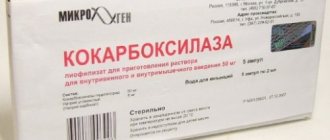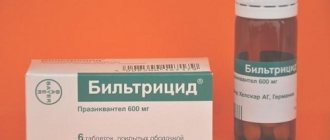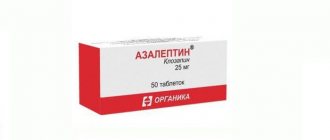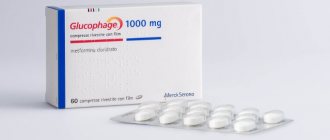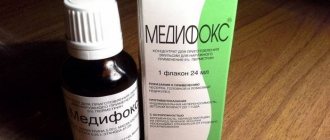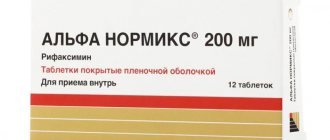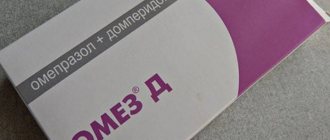Indications for use
The Japanese blood pressure medicine Edarbi is indicated for use in the following cases:
- Arterial hypertension;
- Hypertension of any stage;
- Essential hypertension.
Japanese Edabri tablets can also be recommended as one of the components of complex therapy for cardiovascular diseases with a concomitant increase in blood pressure.
Edarbi Clo - a drug for high blood pressure
Composition of Edarbi and Edarbi Clo tablets
The main active component of Edarbi and Edarbi Clo tablets is medoxomil azilsartan. The drug also contains the following additional ingredients:
- Croscarmellose sodium;
- Hyprolose;
- Magnesium stearate;
- Mannitol;
- Microcrystalline cellulose;
- Fumaric acid;
- Sodium hydroxide.
All components of Edarbi Clo complement and enhance each other's action, guaranteeing a pronounced synergistic effect of the drug.
Effect of the drug on blood pressure
The blood pressure drug Edarbi Clo belongs to the group of specific AT1 receptor blockers and inhibits the proliferation of angiotensin. This hormone activates the following processes in the human body:
- Sodium absorption by the renal apparatus;
- Vasoconstriction;
- Activation of aldosterone release processes;
- Stimulation of cardiac muscle functions.
Due to the peculiarities of its composition, the medicine Edarbi lowers blood pressure. It is important that the tablets begin to act quickly, after 2-3 hours, and the therapeutic effect lasts throughout the day.
Edarbi begins to act quickly
Pharmacological properties
Pharmacodynamics
Edarbi Clo is a combined antihypertensive drug that includes the angiotensin II receptor antagonist (ARA II) - azilsartan medoxomil, and the thiazide-like diuretic - chlorthalidone. The combined use of these active substances provides a more pronounced reduction in blood pressure (BP) when compared with taking each of them as a monotherapy drug. Taking Edarbi Clo once a day leads to an effective reduction in blood pressure for 24 hours.
Azilsartan medoxomil is a specific ARA type II type 1 (AT1). Angiotensin II is formed from angiotensin I in a reaction catalyzed by angiotensin-converting enzyme (ACE, kininase II). Angiotensin II is the main vasoconstrictor of the renin-angiotensin-aldosterone system (RAAS), its effect is to constrict blood vessels, stimulate aldosterone production, increase heart rate (HR) and sodium reabsorption by the kidneys.
Azilsartan medoxomil is a prodrug intended for oral administration. The substance is quickly transformed into the active azilsartan molecule, which selectively blocks the development of the effects of angiotensin II by inhibiting the latter’s connection with the AT1 receptor in various tissues, including the adrenal glands and smooth muscles of the vascular walls. As a result, its effect is not associated with the course of angiotensin II biosynthesis. The AT2 receptor is localized in many tissues, but does not affect the regulation of the cardiovascular system (CVS). The affinity of azilsartan for the AT1 receptor is 10,000 times higher than that for the AT2 receptor.
In the treatment of arterial hypertension, ACE inhibitors are widely used, suppressing the formation of angiotensin II from angiotensin I, and thereby inhibiting the activity of the RAAS. ACE inhibitors also block the breakdown of bradykinin catalyzed by ACE; Since azilsartan does not inhibit kininase II, its effect should not extend to the effect of bradykinin. The substance also does not affect other receptors or ion channels, which are of great importance in the regulation of cardiovascular system.
Azilsartan dose-dependently inhibits the vasoconstrictor effect of angiotensin II infusion. A single dose of azilsartan in an amount corresponding to 32 mg of azilsartan medoxomil inhibited the maximum vasoconstrictor effect of angiotensin II at the time of highest concentration by approximately 90%, and by approximately 60% 24 hours after administration. After a single oral dose and after repeated doses of azilsartan medoxomil in healthy volunteers, an increase in plasma angiotensin I and II concentrations and renin activity, as well as a decrease in aldosterone levels, was observed. At the same time, no significant changes in the serum level of potassium or sodium in the blood were detected. The pharmacodynamic properties of azilsartan medoxomil are generally combined with inhibition of AT1 receptors.
The development of the antihypertensive effect of this substance occurs during the first 2 weeks of the course, and the maximum therapeutic effect is observed after 4 weeks. After oral administration of a single dose, a decrease in blood pressure is usually achieved within a few hours and persists for 24 hours.
Chlorthalidone is a thiazide-like diuretic that inhibits the active reabsorption of sodium ions in the renal tubules (in the initial part of the distal convoluted tubule of the nephron). As a result, the active substance increases the excretion of chlorine and sodium ions and enhances diuresis; it also helps to enhance the excretion of magnesium, potassium, bicarbonate ions, and retains uric acid and calcium ions.
The antihypertensive properties of the drug are due to the removal of sodium and fluid from the body. The diuretic effect is observed 2–3 hours after oral administration of chlorthalidone and persists for 2–3 days. The hypotensive effect appears gradually and reaches its maximum effect 2–4 weeks after the start of treatment.
In clinical trials, the combination of azilsartan medoxomil and chlorthalidone was more effective than the combination of azilsartan medoxomil or olmesartan medoxomil with hydrochlorothiazide, despite the fact that more study participants in the comparison group required a dose increase due to insufficient blood pressure control. In a double-blind, dose-escalating study over 12 weeks, the combination of azilsartan medoxomil and chlorthalidone (40 and 25 mg, respectively) was significantly superior to the combination of olmesartan medoxomil and hydrochlorothiazide (40 mg and 25 mg, respectively) in reducing systolic blood pressure. Blood pressure against the background of moderate and severe arterial hypertension.
Similar results were observed in all subgroups of patients, regardless of age, gender or race.
The combination of active components of Edarbi Clo lowered blood pressure more effectively than the combined use of olmesartan medoxomil/hydrochlorothiazide in each hour of the 24-hour period between drug doses according to 24-hour blood pressure monitoring (ABPM) data.
Pharmacokinetics
After oral administration of Edarbi Clo in the blood plasma, the maximum concentration (Cmax) of azilsartan is determined within approximately 3 hours, the half-life (T½) is approximately 12 hours. The pharmacokinetic parameters of azilsartan, such as Cmax, the period to reach Cmax (TCmax) and the area under the concentration-time curve (AUC), are similar when used alone and when combined with chlorthalidone.
The volume of distribution (Vd) of azilsartan is on average 16 l, the connection with blood plasma proteins (mainly with albumin) reaches more than 99%.
During the biotransformation of azilsartan, two primary metabolites are formed, mainly in the liver. The main metabolite (M-II) in blood plasma is formed by O-dealkylation, the minor metabolite (M-I) by decarboxylation. In humans, the AUC value for these metabolites is respectively 50% and less than 1% compared to azilsartan. The latter is metabolized by the CYP2C9 isoenzyme.
Azilsartan and its metabolites are excreted by the kidneys and through the intestines; after oral administration, approximately 55% of the drug (mostly in the form of metabolite M-I) is detected in the feces and approximately 42% (as the main substance - 15%, in the form of metabolite M-II - 19%) - in urine. There were no significant differences in the pharmacokinetics of azilsartan in patients of different ages and gender. There is no need to adjust doses based on race.
Chlorthalidone after oral administration is absorbed from the gastrointestinal tract by 60%, on average Cmax in blood plasma is reached within 12 hours, T½ is 40–50 hours. The AUC value of chlorthalidone is similar both when taken together with azilsartan medoxomil and when used as monotherapy, however, Cmax when used in combination is 47% higher.
The bioavailability of Edarbi Clo when taken with food is not affected in a clinically significant manner.
In whole blood, chlorthalidone is characterized by predominantly binding to erythrocyte carbonic anhydrase. In blood plasma, about 75% of the substance is associated with its proteins, while 58% is associated with albumin. Chlorthalidone is excreted mostly unchanged. Data on comparative amounts of the substance excreted unchanged and in the form of metabolites are not provided.
Since chlorthalidone is a thiazide-like diuretic, it passes into breast milk. There is no information on differences in the pharmacokinetic parameters of this substance in patients of different genders, as well as depending on race. In elderly patients, chlorthalidone is excreted more slowly than in younger patients, but this decrease is not clinically significant. In the presence of renal failure, accumulation of chlorthalidone may occur.
Release forms and dosages
The Japanese blood pressure drug Edarbi is presented on the modern pharmaceutical market in the form of tablets - convenient for use and dosage. The dosage of the main active ingredient can be 20 mg, 40 mg or 80 mg, as indicated on the tablets themselves.
The drug Edabri Clo is presented in dosages of 40 mg + 12.5 mg or 40 mg + 25 mg.
The medication is sold in packages containing from 1 to 7 blisters, each containing 14 tablets.
How to take Edarbi and Edarbi Clo tablets for high blood pressure
Instructions for use of the drug Edarbi recommend starting therapy with the use of 40 mg of the drug throughout the day.
For mild symptoms of arterial hypertension or hypertension, the starting dose is 20 mg per day.
If it is not possible to normalize the patient’s blood pressure, the daily dosage of tablets is increased by 50% - up to 80 mg.
Edarbi Clo blood pressure tablets are also started to be taken at a minimum dose of 40 mg + 12.5 mg - 1 time throughout the day. If there is no expected positive result, the daily dosage of the drug can be increased to 40 mg + 25 mg.
Edarbi should be taken regularly and systematically, with equal time intervals, avoiding omissions, since the drug has a cumulative effect. If the drug was missed, then the next time you should not increase the dosage of the tablets.
The drug is started with minimal dosages
The duration of the therapeutic course is determined individually depending on the diagnosis, the patient’s condition and the reaction of his body to the proposed treatment. However, doctors and patients themselves note that a significant improvement in general condition and stabilization of blood pressure become noticeable after 2 weeks of regular use of Edabri tablets. The average duration of treatment for hypertension is about one month.
Despite the absence of withdrawal syndrome from the drug, experts recommend completing therapy smoothly, gradually reducing the daily dosage.
Edarbi high blood pressure tablets are taken whole, without chewing, regardless of the meal schedule.
The drug can be used as an independent drug, but if it is not possible to normalize blood pressure through monotherapy, the tablets can be combined with other hypertensive medications.
Edarbi - instructions for use
The main effect of Edarbi is to lower blood pressure. Before starting a course of 6-12 months, it is recommended to take diuretics, which perform a diuretic function. When Edarbi is used simultaneously with them, only an increase in the effect of lowering blood pressure is observed without the risk of harmful effects. With azilsartan monotherapy, side effects occur only slightly and do not pose a threat to the patient's health. Particular attention should be paid to drugs that contain lithium:
- When taking lithium drugs in parallel, toxicity may occur.
- If the concentration of lithium is high, it is necessary to stop taking ACE inhibitors (if any were taken).
Initial dose of the drug
When prescribing the drug, you should adhere to the recommended minimum dosage. It should not exceed 80 milligrams/day, since if the dose is exceeded, side effects of angiotensin are possible. The initial dose should be 40 milligrams/day (recommended to be taken before or after meals). If the recommended intake is not followed, severe renal dysfunction and simultaneous deterioration of the cardiac system may rarely occur.
Dosage for long-term use
Special instructions for Edarbi: dosage requires adjustment after a complete examination of the patient, based on his biological indicators. The action of angiotensin negatively affects the functioning of the cardiovascular tract, leading to a sharp increase in AR or chronic imbalance, therefore it is recommended to take the medicine as follows:
- Initially, to reduce blood pressure, 40 milligrams of the substance (the active ingredient acts as a specific angiotensin antagonist).
- At the end of the dose, it is permissible to increase the dosage to 60-70 milligrams. To avoid water-electrolyte imbalance, diuretics should be taken.
What is withdrawal syndrome when you suddenly stop taking it?
If you stop taking it abruptly, some medications can cause withdrawal symptoms, which means that the negative symptoms of the curing disease reappear. When taking Edarbi, this may result in uncontrolled arrhythmias. The risk of developing myocardial infarction cannot be excluded. This is due to the strong biological effect on the body from the active substances. The instructions indicate that to neutralize the risk of such an effect, it is necessary to control the dosage without exceeding it. The same applies to analogues of the drug.
Contraindications for use
The instructions for the Edarbi tablet contain information about the following contraindications to the use of the drug:
- Renal artery stenosis;
- Severe liver dysfunction;
- Diabetes;
- Carrying out a therapeutic course with the drug Alixiren;
- Individual intolerance and hypersensitivity to the active ingredients of the tablets.
It is strictly forbidden to use the drug Edabri for high blood pressure to treat minor patients, women expecting the birth of a baby and breastfeeding mothers.
With great caution, tablets are prescribed to patients with diagnosed pathologies of the renal apparatus, severe cardiac diseases, ischemia, as well as to persons over 75 years of age.
When treating such patients, constant medical supervision, monitoring of general condition and individual adjustment of the drug dosage are required.
Patients with diagnosed cardiomyopathy should use the drug Edarbi with great caution, since a sharp decrease in blood pressure can provoke the development of a stroke or myocardial infarction!
For women expecting a child, Edarbi is contraindicated
Use during pregnancy and lactation
Taking Edarbi Clo during pregnancy and lactation is contraindicated. There are no data on the use of the drug by pregnant women.
Newborns whose mothers took azilsartan medoxomil require careful medical monitoring, as their risk of developing arterial hypotension is increased.
Chlorthalidone can enter the umbilical cord blood through the placental barrier and lead to the development of fetal or neonatal jaundice, thrombocytopenia and other undesirable effects noted in adults.
If pregnancy is confirmed during therapy, the use of Edarbi Clo must be immediately stopped and, if necessary, replaced with another drug approved for use in pregnant women.
It is unknown whether azilsartan and/or its metabolites pass into human milk, but animal studies have revealed the ability of azilsartan and its metabolite M-II to pass into the milk of lactating rats. It has been established that chlorthalidone is excreted in breast milk.
If taking the drug is necessary during lactation, you should stop breastfeeding. During this period, it is advisable to use medications that have a proven safety profile.
Side effects
Treatment with the blood pressure drug Edarbi may cause the following side effects:
- Attacks of dizziness;
- Diarrhea;
- Nausea;
- Skin itching;
- Rash like urticaria;
- Swelling;
- Muscle spasms;
- Excessive decrease in blood pressure;
- Increased fatigue.
Edarbi tablets are generally well tolerated. Side effects usually occur when recommended doses are exceeded, in combination with other drugs, in the presence of clinical contraindications or individual intolerance. In any case, if painful symptoms appear, the medication should be temporarily discontinued and consult a doctor!
The drug Edarbi does not affect the speed of reactions and the ability to concentrate, therefore driving a car and other activities that require extreme composure are allowed during the therapeutic course.
Special information
Patients suffering from hypovolemia and low electrolyte levels may complain of symptomatic hypotension after starting to use Edarbi-K. To avoid such a situation, such patients need to adjust the volume of circulating blood before the course of treatment. If hypotension occurs, place the patient supine and inject saline intravenously. This manifestation is not a contraindication, so treatment with Edarbi-K can be resumed.
Some patients receiving Edarbi-K may suffer from problems with kidney function. In the absence of dose adjustment, such patients may develop oliguria or progressive azotemia. Rarely, exacerbation of renal failure and patient death occur.
Systematic use of chlorthalidone may cause hypokalemia. To avoid this disease, the patient should regularly check the blood for potassium levels. In patients taking glycosides in parallel, the disease often causes arrhythmia.
There is no data on the effect of the drug on patients suffering from severe liver pathologies, so it is better not to prescribe Edarbi-K to such patients. Patients who have been diagnosed with mild or moderate abnormalities in liver function may take it with caution. Representatives of the risk group must be constantly under the supervision of a specialist.
Patients taking Edarbi-K should not operate machinery and avoid situations requiring high concentration. This is due to the fact that the drug can cause slight dizziness and fatigue.
Overdose
The maximum permissible daily dose of Edarbi is 80 mg. When using a larger amount of medication, an overdose is possible, manifested by symptoms such as attacks of severe dizziness, loss of coordination of movements, a sharp decrease in blood pressure, up to the development of a hypotensive crisis.
In case of overdose, it is necessary to give the patient gastric lavage, put him to bed, ensuring absolute rest and seek professional medical help. Depending on the symptoms present, the doctor will perform certain manipulations aimed at restoring blood circulation and microcirculation.
An attack of dizziness may be a symptom of a drug overdose
What can be replaced?
Pharmacy chains offer the following analogues of Edarbi:
- Valaar;
- Sartavel;
- Lozap;
- Hypotene;
- Vasotens;
- Kozaar;
- Hyposard;
- Losartan;
- Angiakand;
- Nortivan;
- Blocktran;
- Cardiomin-Sanovel;
- Prosartran.
Experts categorically do not recommend self-medication and changing the drug Edarbi prescribed by the doctor to other medications that help lower blood pressure. Each of the analogues listed above is characterized by the presence of specific features, side effects, and restrictions on use. For this reason, if there is a need to replace Edarbi tablets, it is strongly recommended to seek advice from a qualified specialist who will help you choose the most effective and safe analogue.
Edarbi and Edarbi Clo tablets are an effective remedy that helps lower blood pressure and treat hypertension. Despite the small range of contraindications, this drug is allowed to be taken only after prior consultation with a specialist!
Pharmacokinetic interaction
Already after taking the initial dose of the drug, pharmacokinetic interactions such as increased urination and diarrhea (thinning of stool) may be observed. A sharp decrease in blood pressure can lead to increased sweating. To eliminate manifestations, it is necessary to adjust the dose. According to reviews, Edarbi Clo does not cause a slowdown in metabolism, so the medicine does not lead to weight loss. Additional information can be found on the radar website.
Edarby and alcohol
Edarby and alcohol are incompatible. Combination with alcohol-containing drinks has a negative impact on performance and overall health. This is due to the incoming active elements aimed at reducing AR and treating hypertension. When treated with antihypertensive substances, there is a load on the kidneys and liver. In tandem with alcohol, this will cause an extremely negative reaction. Caution applies to everyone; compliance with this requirement is especially important for elderly or younger patients.
Other drugs
The medicine has a number of similar drugs, including Cozaar, Azilsartan, Lothar, Pulsar or Candecor. Analogs of Edarbi Clo include the active substance, the dose of which ranges from 20 to 50 mg. When choosing one of them, on the electrolyte scale it is necessary to observe changes in the water electrolyte balance. If necessary, based on the indicators, dosage adjustment is required to prevent disruptions by hyponatremia.
Before taking or replacing any drug with a similar one, it is recommended to conduct a comprehensive diagnosis and consult with your attending cardiologist. As the dose of medication increases, the risk of unwanted side effects increases. This is especially true for young mothers who are breastfeeding, pregnant women, young children or the elderly.

